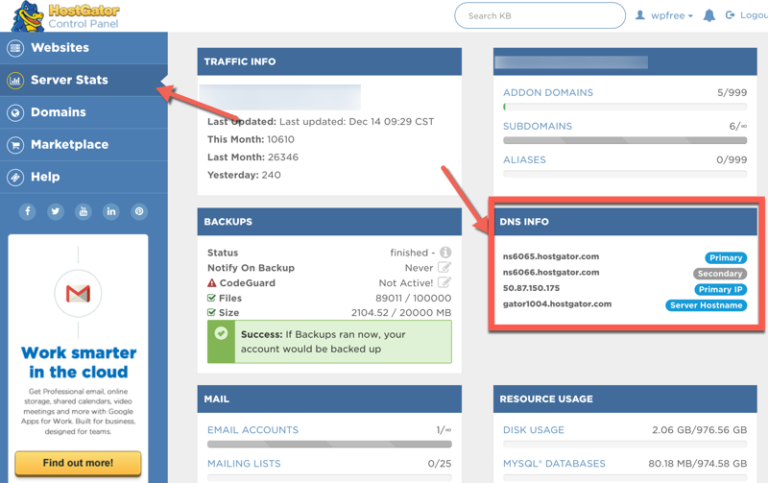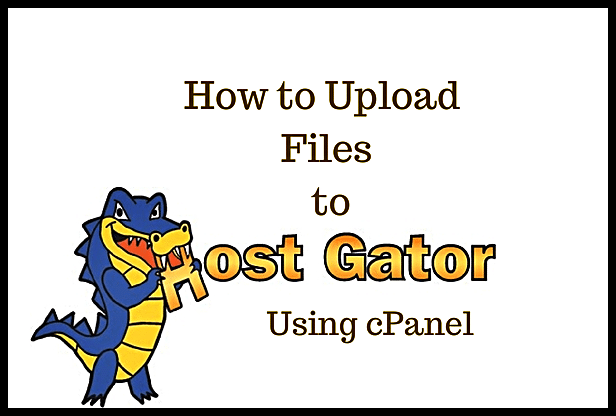

If you are struggling to find the Server Hostname and Site IP address of your website then you can find it into your email.Also, by entering the domain name of your website that contains port number 2083 at the end will take you to the dashboard of HostGator cPanel:.Apart from the domain name, you can directly enter the IP address of your website and enter the port number 2083 at the end:.Use https or directly enter the Server Hostname directly in the browsers and enter the port number 2083 at the end of the link.Here’s the detailed way to log in to your HostGator cPanel account.

Now it will automatically open a new tab that will log in to your cPanel.ĭirect Access of cPanel Using Domain and Portsĭid you know that you can directly access the cPanel using the domains and ports? But some beginners find it difficult compared to the first option but this also used by many webmasters.(The button will be available on either the menu or the dashboard). Find the orange color “ Launch cPanel” button and click on it.Search for the cPanel option that you can find on the Shared or Cloud hosting plan.Now you will reach on the Dashboard, if not then you have to login first.First, log in to the HostGator Customer Dashboard.Here the easiest method to get into your cPanel tool with your hosting panel. The cPanel option available in Shared and Cloud hosting and some other hosting plans. Into these options, cPanel also an option you can find on the menu screen. When you log in to your HostGator hosting account, you will see multiple options there. Both of them use a different environment but quite easy that everyone can use. If you continue to run into issues getting into your HostGator Web Server, you should visit their support site and open a support ticket.Basically there are two different ways to login to HostGator cPanel. Via Non-SSL (non-secure) - log into - YourDomainName:8880.Via SSL (secure) - log into - YourDomainName:8443.It is strongly suggested that you ONLY use the Secure URL method. Via Sub-Domain - log into - YourDomainNameįor the Plesk solution you can log in via two ways - either using non-secure (non-SSL) or secure (SSL) URLs.Via Domain - log into - YourDomainName/whm.For those people that are having bandwidth issues, they should replace their domain name with the IP Address of their server. Via Server - log into - /cpanel (example: )įor the Web Host Manager (WHM) you can log in via two ways - either using your Domain Name or by using a subdomain name off of your existing domain.Via Domain - log into - YourDomainName/cpanel.cPanel Loginįor the cPanel you can log in via two ways - either using your Domain Name or by using the HostGator Web Server your domain sits on. If needed you can always log into their billing area to get the information again. It is very important that you keep that information safe incase you forget any of the details. When you signed up with HostGator you received an email with all the details about your web hosting setup. If so just replace the appropriate place in the URLs listed below. Make note that if you are a new customer, you very likely might have to use the IP Address for your server instead of the Domain Name because DNS might not be fully updated.
HOSTGATOR CPANEL LOGIN HOW TO
Below you will find details on how to get into each of these web managers.

Unlike many other hosting providers, HostGator has made it very simple to log into these control panels as they are sometimes called. When having problems with HostGator and your domain, these are one of the first places you should go to see what the real issue is. These tools help webmasters perform essential tasks quickly, easily, and reliably. Reseller, VPS, and Dedicated Hosting customers can also decide to use other host manager programs like "Web Host Manager" (WHM) or "Plesk" if they prefer to. They use a product called cPanel for all their hosting plans. HostGator provides a great frontend that makes it very easy to manage your domains.


 0 kommentar(er)
0 kommentar(er)
